Good mushroom identification books are trustworthy, detailed, and easy to understand. This can be difficult to find among the great swathe of foraging books available. It seems every forager thinks they can create a mushroom foraging book — there are so many self-published guides online. Some are fine, but when it comes to mushroom identification books, you really want the top-notch, no mistakes possible, reference guide.




The very best mushroom identification books are ones that focus regionally instead of nationally or worldwide. Because, the first thing to understand about mushrooms is that they are regional. For example, Chicken of the woods grows across North America, but there are seven total species. An all-inclusive national guide will probably not list all seven, but a regional guide will list all the ones that grow in that area.
Regional mushroom identification books are focused, generally have more pictures, and are usually easier to use – a lot of this is because they are smaller. When it comes to identification, though, it is best practice to have more than one book. There is no one perfect guide for everyone.
Curious about growing your own mushrooms instead of foraging? Check out our mushroom grow kits review.
Jump to:
- Choosing The Best Mushroom Identification Books For Your Foraging Personality
- Best Overall Mushroom Identification Books
- Best Mushroom Identification Books for Western North America
- Best Mushroom Identification Books for the Midwest and the Rocky Mountains
- Best Mushroom Identification Books for Eastern North America
- Best Mushroom Identification Books for the Southern States
- Best Books About Mushrooms (Not Identification)
Choosing The Best Mushroom Identification Books For Your Foraging Personality
Most mushroom identification books fall into two categories:
- easy-to-read foraging guides with limited species
- complicated encyclopedic guides with tons of species.
There is a place for both of these, of course. Some people just want the basic “What’s edible?” guide, and others want the “What the heck is this mushroom? I must know” guide. These are two types of mindsets and so, before buying any books, think about which one you are. Because if you are a person who needs identification just for the fun of it, you’re probably not going to like the simple guides. And vice versa.
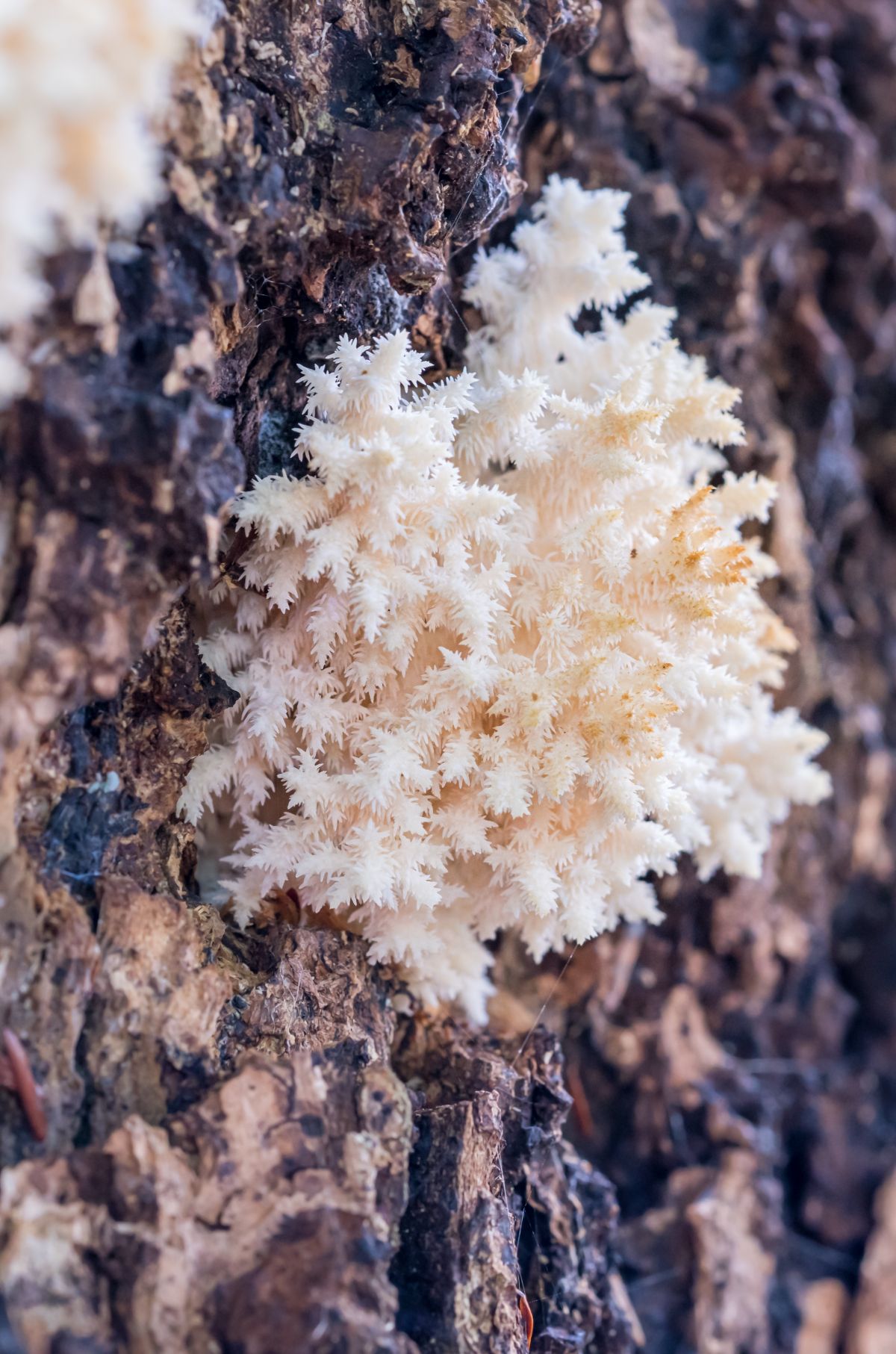







All of the books listed here are available on Amazon, and you can see the other reviews. And, of course, it seems so many people buy books not fit for their type of mind. The nerdy mushroom id’ers buy basic guides and then complain that they’re not detailed enough. And then, the low-key “tell me what’s edible” folks buy the extensive comprehensive guides and complain they’re too complicated. SIGH.
So, while you’re thinking about what books you should buy and reading reviews, take all this into account. None of these books are wrong. Some struggle a bit with organization, but that’s the biggest downfall of any of these books.
The more straightforward mushroom identification books in this list are excellent for what they are and so are the super complicated detailed ones. It’s up to you to get the right ones for your type of mushroom foraging personality.
Best Overall Mushroom Identification Books
The National Audubon Society’s Field Guide to North American Mushrooms is thick, comprehensive, densely packed with information, and fits in a backpack. It does the best an all-around guide can do, which actually says a lot.
The pictures aren’t fantastic – it’s very obvious the book was published in the 1980s. And, there aren’t enough pictures. It is written by Gary Lincoff (also the author of The Complete Mushroom Hunter listed below), and the information is useful. It gives the beginner a good starting point regarding the vast variety of mushrooms and their appearances. However, more advanced foragers will find it highly frustrating.
This is an excellent book to have on the shelf for cross-reference, but not for everyday identification use. It’s also, at 41 years old, very outdated as far as naming. (Hint, hint, National Audubon Society!)
Edible Wild Mushrooms of North America by Alan Bessette and David Fischer is just what the title says – a detailed identification guide to the edible species. For beginner foragers only interested in edible types, this is a must-have. It is fantastic with its simple identification tools and information.
This book is designed for the amateur forager and only includes the top 100 edible species. It also has some wonderful mushroom preparation and cooking advice along with recipes. Considering there are thousands of mushrooms in North America, this book only covers the very basics, but that’s one reason it’s so great. The limited scope makes it accessible to all.
Okay, so this isn’t a book, but I love these MycoCards so much! And that they’re segmented out by east/west, making them even better – more focused. These Mycocards are just for identifying boletes – a subsection of mushrooms.
They’re not for the total mushroom novice but an incredible tool for the novice itching to become a smarty-pants. The cards are laminated, easy to take out in the field, feature incredible photos, and very clear on to-the-point identification features. Highly recommend them if you’re into flashcards, nerding out on mushrooms, and improving your identification of bolete species.
Best Mushroom Identification Books for Western North America
Mushrooms of the Pacific Northwest by Steve Trudell and Joe Ammirati is a favorite of Pacific Coast foragers. It does get slightly mixed reviews because it doesn’t include notes on edibility, which is upsetting for the forager who only wants to know edible species. The descriptions also rely heavily on Latin names.
This is not an easy beginner’s guide to edible mushrooms. What this book is, though, is an excellent identification guide for all Pacific mushrooms. And the photography is stunning!
For the last 31 years, All That The Rain Promises and More by David Arora has been a beloved book to all in the foraging community. It is an uplifting, incredibly well-written, and often amusing identification guide. It’s also part storybook.
This book focuses on west-coast mushrooms and only includes 200 of the most common ones. It is not comprehensive, but it is well-done and well-organized. The pictures and identification notes hold up very well over time, as do the tales of foraging. Of course, being an older guide, some of the names are outdated.
Mushrooms of the Northwest by Teresa Marrone is excellent. She has done mushroom identification books for many regions, and they’re perfect in their simplicity and specialty. They’re small, easy to toss in a backpack, have great pictures, and are made for beginner foragers. They’re not that technical or comprehensive, but they give the basic information necessary for identification.


The Falcon Guide Foraging Mushrooms Washington is an excellent starter guide for the edible species in Washington state. If you’re looking for a comprehensive guide to all mushrooms, look to some of the other books – this isn’t it. However, this book is superb for beginners just interested in some of the common edible mushrooms and how to prepare them. The recipes are easy, too, making the entire guide super simple and straightforward.
In addition to this book about mushrooms of Washington, the author Jim Meuninck also has one specific to Oregon: Foraging Mushrooms Oregon.
Mushrooms of the Redwood Coast is a beautiful display book with spectacular images of California mushrooms. It’s great for detailed identification, but it’s definitely not a book you can take out in the forest with you. The identification information is spot on and includes a vast variety of mushrooms found on the Redwood Coast. Its biggest downside is also its biggest upside – very specific regionalism.
Best Mushroom Identification Books for the Midwest and the Rocky Mountains
Michael Kuo’s Mushrooms of the Midwest details over 500 species found in the region. It is extensive with superb identification keys and information. There are plenty of images and identification tips to assist the forager.
This identification guide is more for experienced foragers than beginners. The use of scientific names almost exclusively can be overwhelming for the newbie mushroom forager. That being said, it’s still worth giving it a try even if you’re not that experienced, as this book will get you there in no time. It covers way more than just edibles, so be prepared to learn!
Mushrooms of the Upper Midwest by Teresa Marrone and Kathy Yerich is a simple, easy-to-understand guide covering 400 of the most common mushrooms in the Midwest. It features terrific color photos and is well-organized. It is also the perfect size to throw in your backpack. This guide covers the edible and toxic and is one of the best guides for novices.
Anyone looking for an in-depth, comprehensive detailing of every mushroom will not like this book. This is a foraging field guide, and it’s small. Teresa Marrone’s mushroom books are incredible little guides for folks dipping their toes into the foraging world.
The Essential Guide to Rocky Mountain Mushrooms by Habitat by Cathy Cripps, Vera Evenson, and Michael Kuo is a stunning and accessible guide to the region. It goes way beyond edible mushrooms and is not for the basic forager. This guide relies on scientific names and that you are paying attention to the habitat the mushroom was discovered in.
This is not a quick guide by any means, but it gets you the correct information, which is what is important. I don’t know of any other mushroom identification book organized by habitat, and this rare feature makes it invaluable. Hundreds of mushrooms, edible and not, are covered to make this a comprehensive reference guide.
Best Mushroom Identification Books for Eastern North America
Edible and Medicinal Mushrooms of New England and Canada, by David Spahr, is a beautiful, easy-to-understand identification book accompanied by incredible photographs. As the name makes clear, this book is not comprehensive and does not contain all mushrooms. This mushroom identification book only has the edible and medicinal species.
This is perfect if all you want to know about mushrooms is which ones you can eat or benefit from. However, if you have more than a passing interest in mushrooms, it will not be as comprehensive as you’d like. This book is excellent for what it is, though. The photography is incredible; the descriptions are detailed and well-written. And, it provides cooking and preparation instructions, which are greatly appreciated.
Mushrooms of the Northeast Teresa Marrone is one of the easiest-to-use mushroom identification guides out there. Like her other regional guides, this one has about 400 mushroom species in it, along with basic identification, excellent pictures, and easy-to-follow guides. It gives clear information on edibility, basic knowledge, and how to identify a mushroom. It’s also the perfect size to carry out in the field.
Mushrooms of the Northeastern United States and Eastern Canada by Timothy Baroni details 500 of the region’s most common mushroom species. It features beautiful and helpful photographs, identification keys, and information. It is comprehensive, a bit on the scientific side, and highly detailed. This is probably not one for novices as it’s helpful to have a little knowledge beforehand or take the time to read all of the introduction so you can follow the guides.
There isn’t much information about edibility, so give this book a pass if that’s all you want. This book is geared more towards amateur mycologists, mushroom nerds, and any with more than a passing curiosity about mushrooms. It’s excellent in its depth of knowledge and evident expertise.
Foraging Mushrooms Maine is a Falcon Guide written by Tom Seymour. It is an excellent little guide for beginner foragers who are looking for the top edible mushrooms in Maine and want to know how to prepare them. While the book is written explicitly for Maine, most of the mushrooms can be found in all of New England.
The identification information is to the point and simple, as are the recipes, but they’re all wonderful. This book does not cover every mushroom species – it’s just the top edibles. So, don’t get this one if you’re looking for a comprehensive guide. However, this is perfect if you’re an occasional forager who wants to know the basics.
Walt Sturgeon’s Appalachian Mushrooms: A Field Guide is one in a million. It doesn’t work like most identification guides, and that’s a nice change – it forces you to get to a “scientific” level by doing a spore print to understand and access the key. For some people, this will be unbearable. But, if you want to truly learn about mushroom species (all of them!), then this is an excellent mushroom identification book.
It covers far more than the edible species, with over 400 mushrooms represented here. The photos are excellent, the information detailed, and the knowledge very apparent. This guide isn’t just for people living in the Appalachians – anyone on the east coast will benefit from this resource.
Best Mushroom Identification Books for the Southern States
Mushrooms of the Southeast is an easy-to-use, comprehensive field guide by Todd F. Elliott and Steven L. Stephenson. The pictures are fantastic and include gill, cap, stem, and environment notes. This clearly outlined level of detail is rare in identification books, which is sad. The quality images are greatly appreciated.
This mushroom identification book highlights 330 species organized in an easy-to-follow color-coded layout. The states it covers are Alabama, Arkansas, Georgia, Kentucky, Louisiana, Maryland, Mississippi, North Carolina, South Carolina, Tennessee, Virginia, West Virginia, and northern Florida.
A Field Guide to Mushrooms of the Carolinas by Arleen and Alan Bessette details 650 mushrooms found in the Carolinas. This field guide is extensive, with tons of information about the mushrooms, edibility, toxicity, and foraging tips. The pictures are lovely, the descriptions detailed, and the knowledge mind-boggling.
The book does suffer a bit from a frustratingly inadequate key to the guide. Those with knowledge of fungi already may not find it to be much of an issue, but beginners will likely tear some hair out. Due to the large number of species listed, there aren’t as many photos as one would like, but that’s a common problem with all printed guides – there isn’t space for all the pictures while also including an exhaustive number of species. That’s the trade-off!
This book is weighty, literally. Mushrooms of the Georgia Piedmont and Southern Appalachians is not for the rudimentary forager. Mary Woehrel and William Light cover the basics but also delve into many uncommon, unusual, and rarely discussed mushrooms. This is part of why this identification guide is so wonderful. If you’re the type of person who wants to get into the nitty-gritty of identification, you’ve found friends in this book.
The detailed, desk-reference-ness of the book is undeniable and especially valuable since it is written clearly and not in scientific myco-lese terminology. This book has fantastic photos, too. The keys, as is sadly common in ID books, are challenging to follow and quite frustrating.
It also rarely uses common names, which leads to issues finding the fungi if all you have is a common name from another book or guide or an old or new scientific name. Since Latin names are now changing with insane frequency, this can lead to serious issues.
Mushrooms of the Gulf Coast States is another comprehensive mushroom identification book by Arleen and Alan Bessette. It covers mushrooms in Texas, Louisiana, Mississippi, Alabama, and Florida. This guidebook features over 1,000 species, which is a lot! It includes identification and edibility information specific to the Gulf Coast region, which doesn’t exist in any other book.
The expertise of the authors is evident, and the information is encyclopedic. However, like their other book, it suffers a bit with organization and keying out species. It is definitely a great resource, even if it is sometimes frustrating to interact with at times. If you’re in the Gulf Coast states, it’s a worthy guide to all the mushrooms, not just edible species.
Best Books About Mushrooms (Not Identification)
Gary Lincoff’s book, The Complete Mushroom Hunter, is not an identification book. Instead, it is a remarkable ode to the joys of foraging, harvesting, and preparing mushrooms through stunning photography and captivating anecdotal stories. The Complete Mushroom Hunter is a man sharing his passion for the fungi kingdom. The book discusses characteristics of mushrooms around the world, fascinating fungi lore, and helpful tips. All of this is based on Gary Lincoff’s decades of experience. There are even some recipes. This is a stunning coffee table book; you won’t be taking this one out in the woods.
Wild Mushrooms: A Cookbook and Foraging Guide by Trent and Kristen Blizzard won’t help much with identification, but it will have you eating well. Or just drooling over the stunning recipes, fabulous photography, and excellent writing. The foraging information is more about when and how to forage and not so much identification. Beautiful coffee table book!
Merlin Sheldrake’s Entangled Life: How Fungi Make Our Worlds, Change Our Minds & Shape Our Futures is a must-read for anyone curious about mushrooms in the broader sense. The author opens up the incredible hidden lives of fungi with vivid descriptions and storytelling. Entangled Life was a New York Times Best Seller and won several book awards in 2021 when it was published. Read this book and open your eyes to the fascinating fungi kingdom that has existed hidden around us since the dawn of time.
People learn differently, so you need to take that into account when searching for mushroom identification books. Search for the ones that cover your region and determine which ones you’ll benefit from most. Whatever you do, though, don’t be careless about identifying mushrooms. Get a good book, or ten, learn how to cross-reference, and consult the experts. Happy foraging!





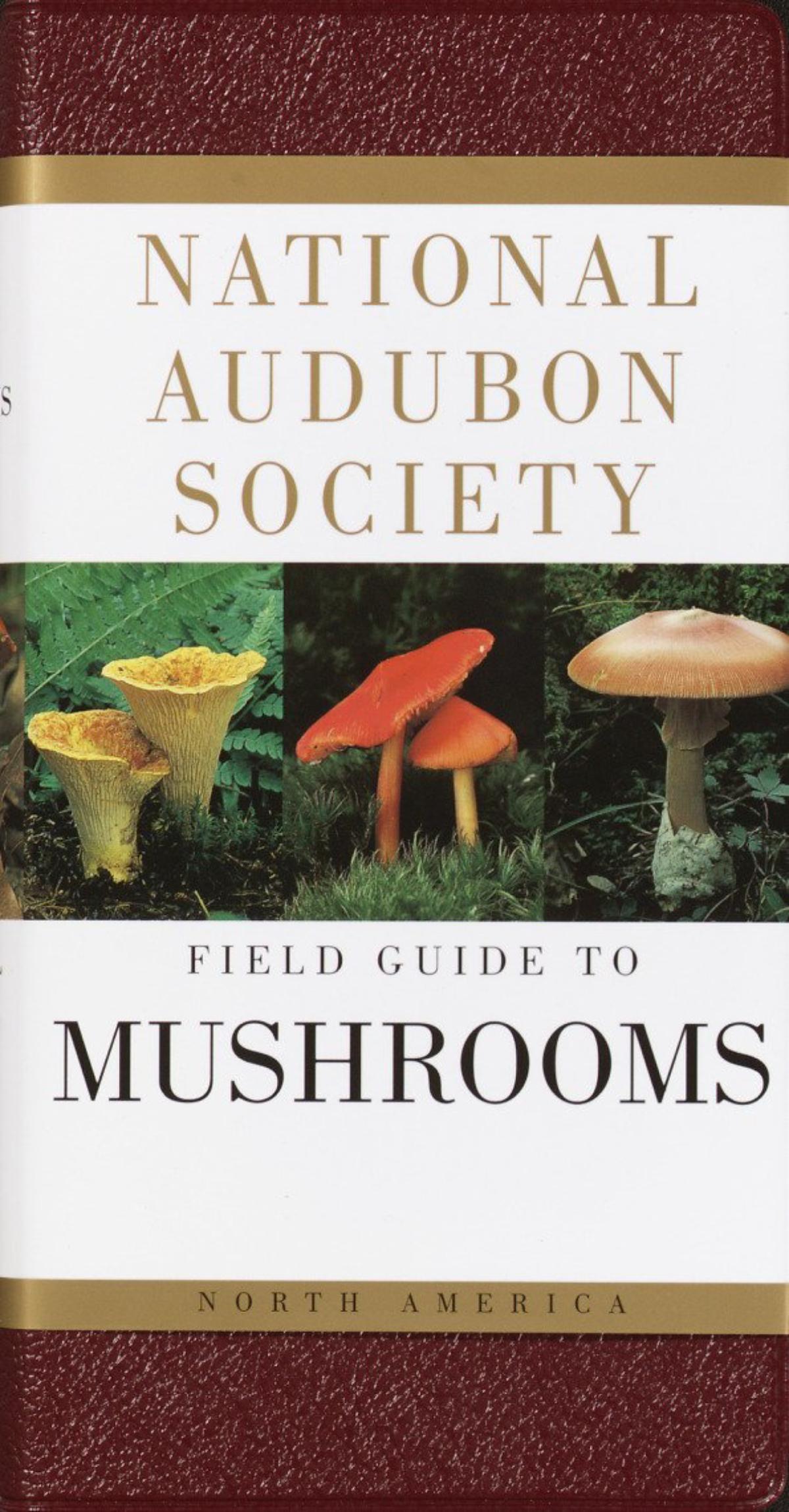
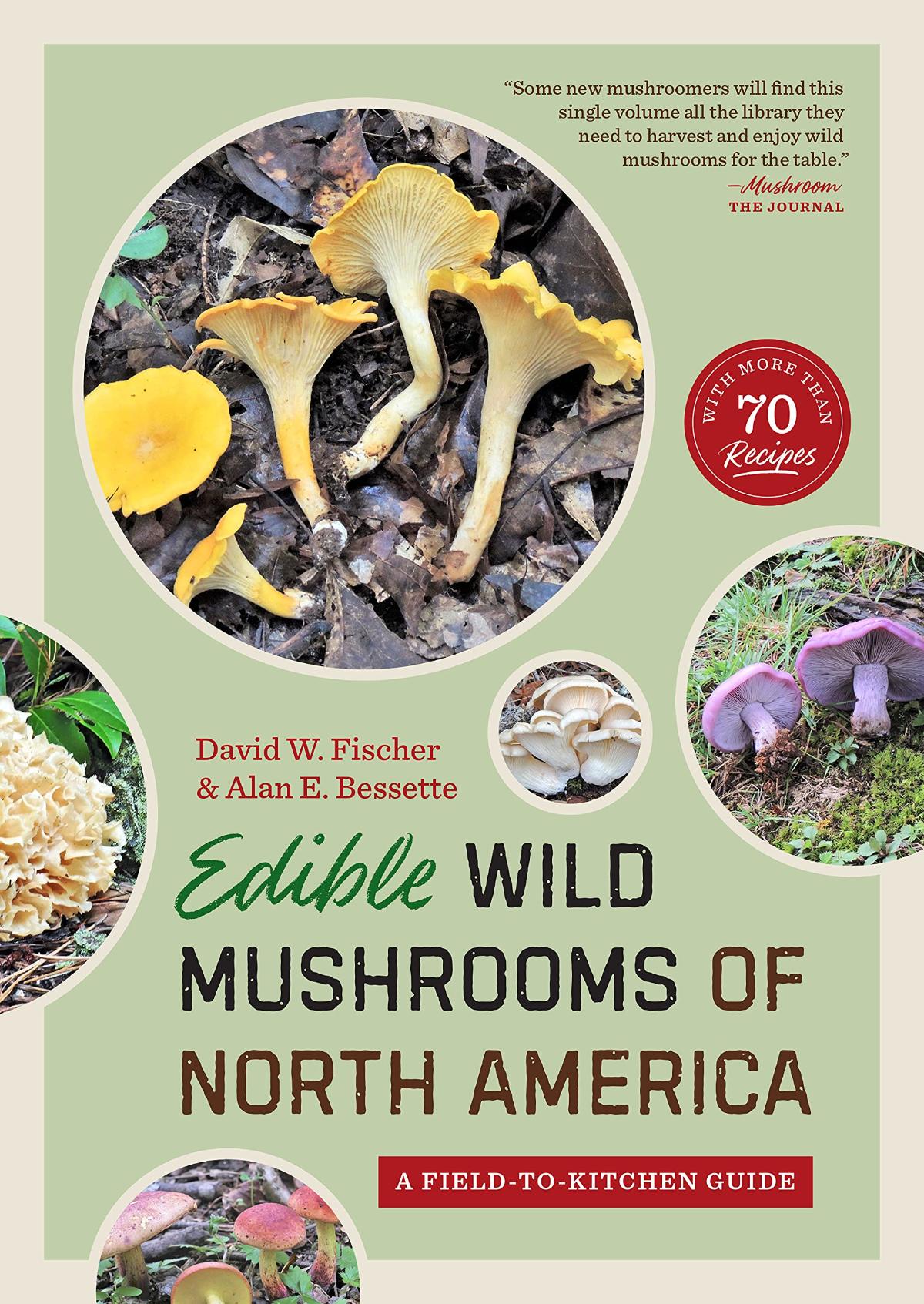





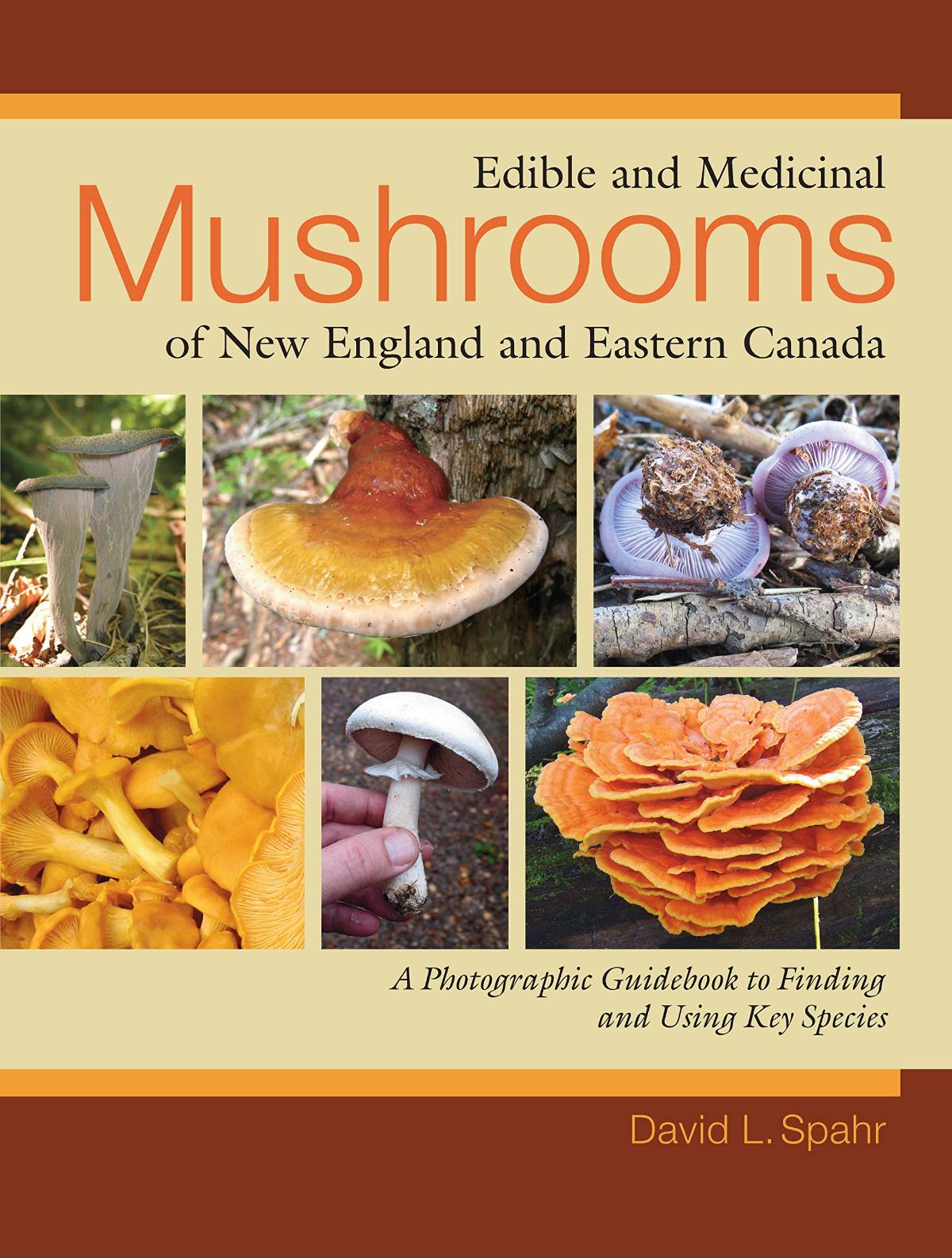
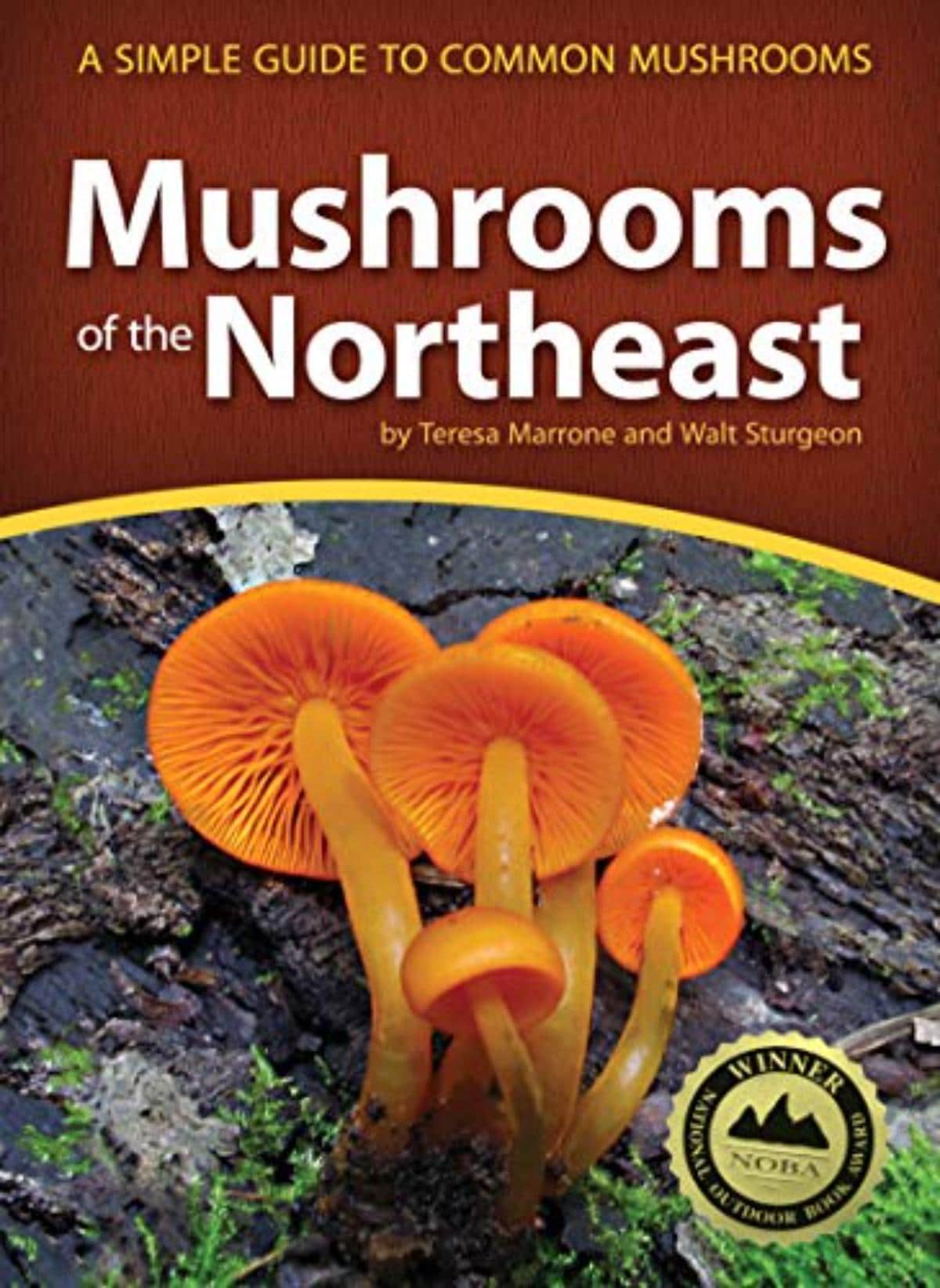


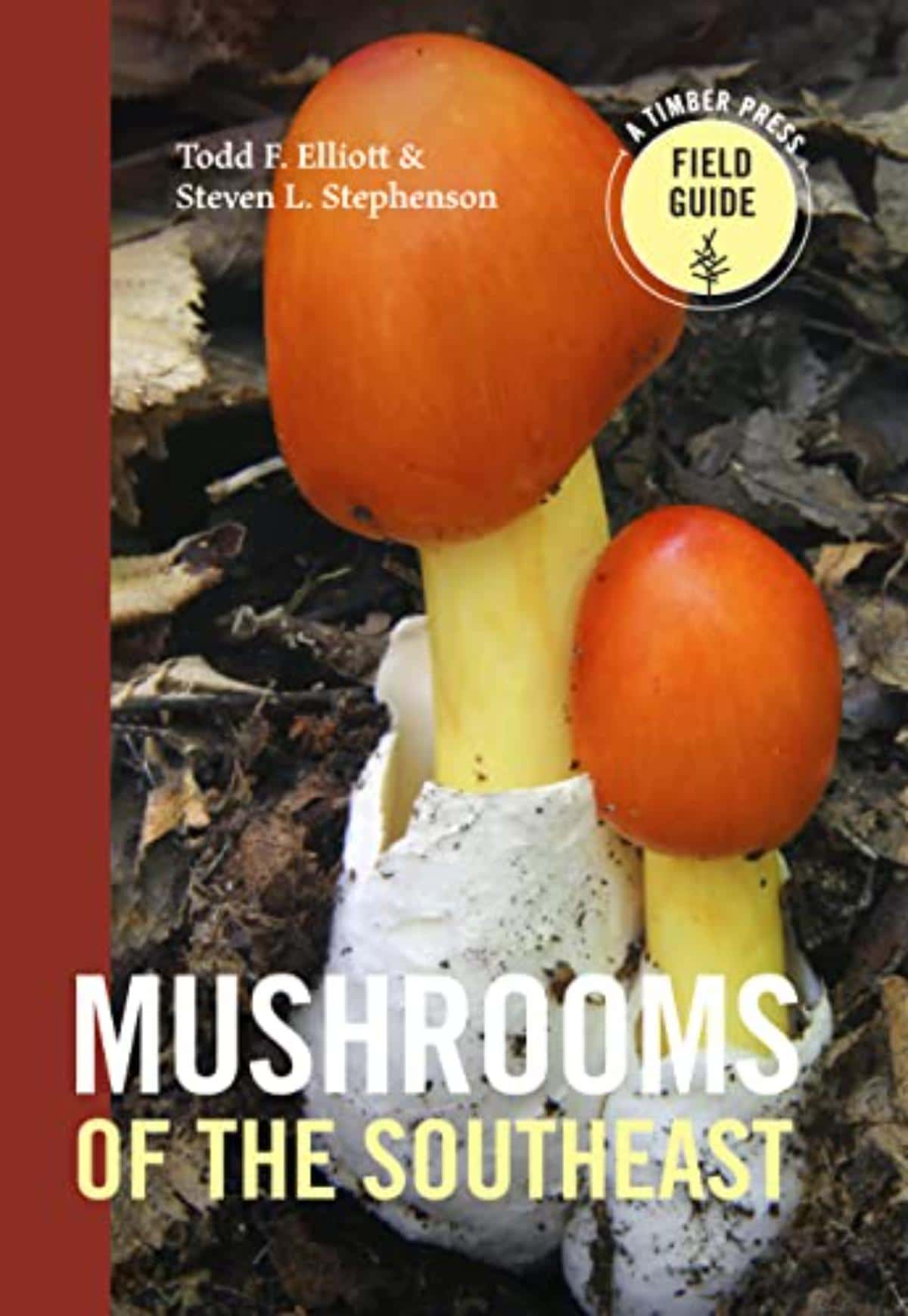


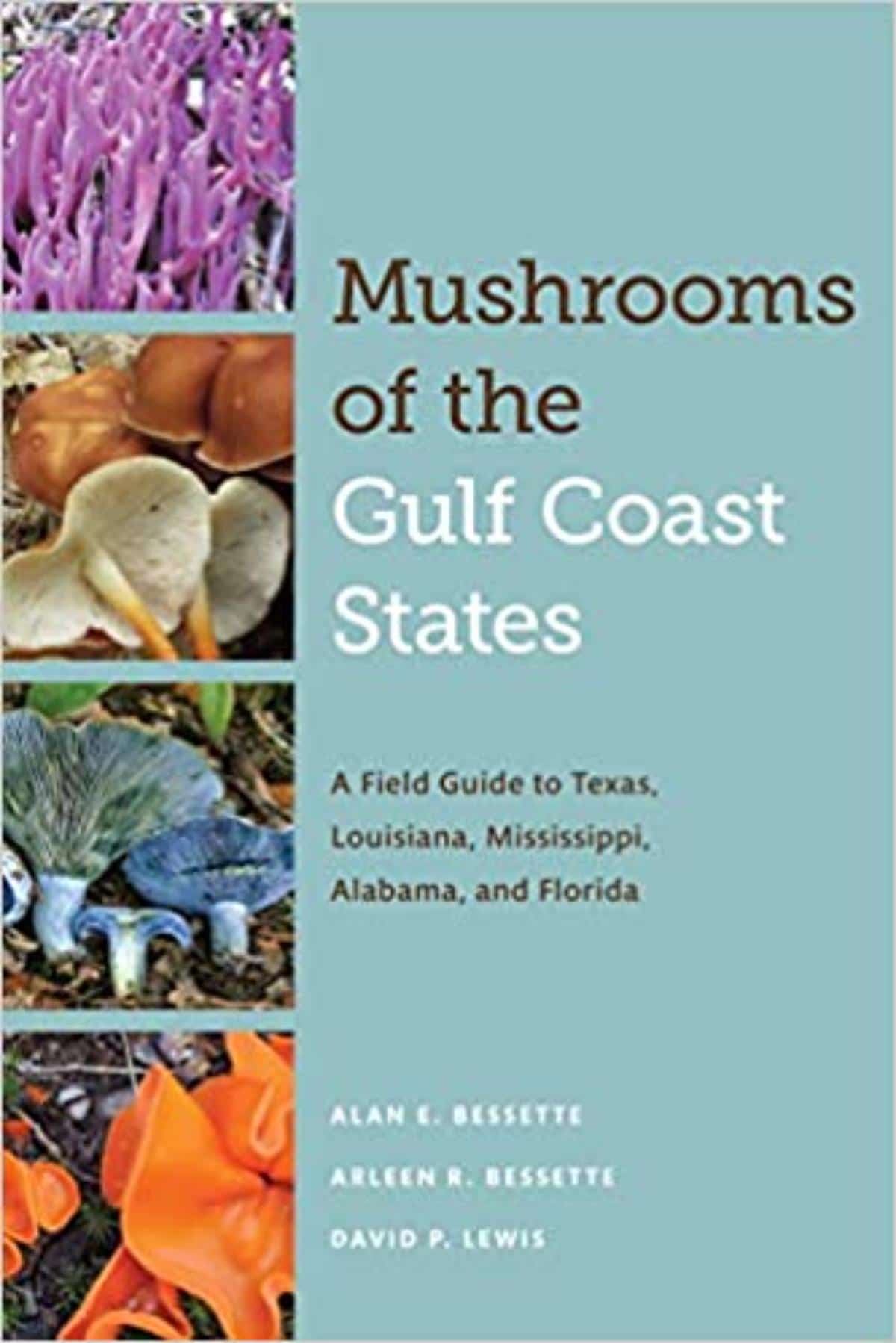


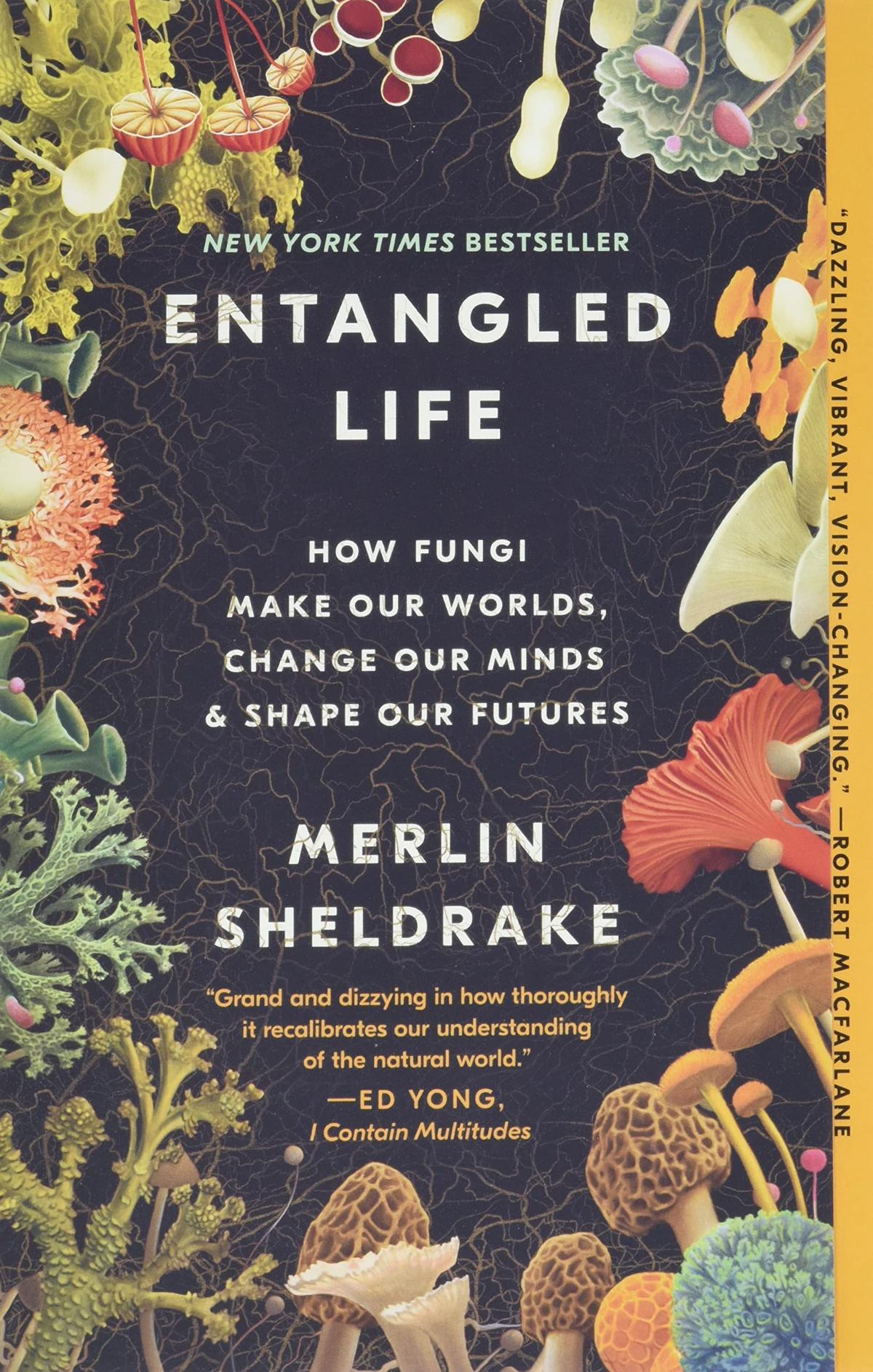




John says
Do you have a recommened guide for California? I have seen one by Debora Wattson and another by Tom Cervenka…
Jenny says
Depends on what you’re looking for. Mushrooms of the redwood coast is an excellent book, but a little scientific (advanced). Tom Cervankas books are excellent as beginner guides to edible and common species. I looked up Debora wattson because I’ve never heard of those and they look super sketchy, like AI written sketchy. The guides for so many states were all published on the same day 2 months ago. I’d avoid those with a ten foot pole. California Mushrooms: The Comprehensive Identification Guide by D. Desjardins is also a good one, but already a little outdated on some names. But still, a great beginner guide
Blue says
Have you looked over the book “Fruits of the Forest: A Field Guide to Pacific Northwest Edible Mushrooms” by Daniel Winkler, by chance? Before I knew it existed, I picked up Winkler’s accordian style fold-out “A Field Guide to Edible Mushrooms of the Pacific Northwest”. A friend and I were investigating a patch of morel-looking mushrooms. (I’d wrongly been told there were no morel look-alikes as a teenager.) Before attempting to eat the mushrooms, a friend brought the foldout over. We were in fact looking at verpa bohemica. It was very educational for me. I bought a copy of the foldout for myself and discovered Winkler had also written this other book. I’ve been considering the purchase, but didnt see it listed on your page here. Which, by the way, I appreciate the distinction you make between types of mushroom books. Ive felt rather overwhelmed reading through the wildly contradictory reviews for several musroom books Ive considered in the past. So much so, that to this day, I still only own the foldout. What you wrote has helped me to better understand what’s going on. So, thank you!
Jenny says
Thank you for this suggestion! At first, I was surprised I could have missed this book since I like and respect Daniel Winkler other work — I absolutely love the Bolete cards that he put together with Bill Neil and Gary Gilbert (these are listed in this guide). Then I saw that this is a new book, published just a month before I wrote my original article. I’ll have to get a copy and update my original guide. Always love hearing of new foraging books, thanks for bringing this to my attention and happy foraging.
Blue says
Oh exciting! Im glad glad to have mentioned it then. I will go ahead and grab a copy too. Hopefully, it will be delightful and educational. At the very least, I’ll have doubled the number of Mushroom reference literature in my library. Have a good one!
David says
Hello… I live in Nicaragua and am looking for a mushroom guide book for my area. I’m not in rain forest. Any help would be appreciated. Thank you
Jenny says
I don’t have any suggestions, sorry. Maybe look for a local mycology or foraging group? Or check with universities to see if there are any clubs or experts in the area who have recommendations